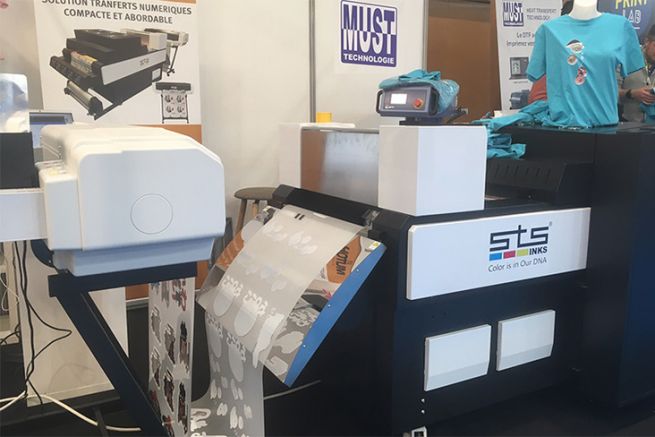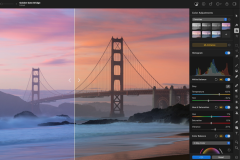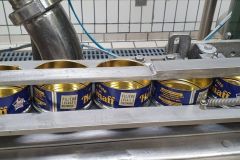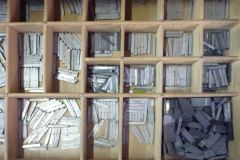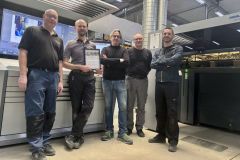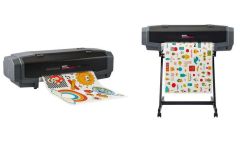DTF, an alternative to direct textile printing
Based on the principle of a thermo-fusible powder which automatically attaches to the printed ink, direct-to-film printing, also known as "DTF", has several advantages:
- compatibility of materials ;
- printing on flat or volume parts (tee-shirt, cap, luggage, etc.);
- very good washing performance;
- elasticity of the finished product ;
- eASE OF USE;
- 100% automatable;
- cost-effectiveness.
According to Stéphane Desseaux, director of the Pubos printing company (59) specializing in textile marking, " this technique is currently reserved for small series, between 3 and 50 pieces, but in the long run, the DTF will evolve further and will replace the flex . DTF will take market share from DTG (Direct to Garment), just look at the evolution of Print On Demand. "
DTF Mutoh / STS VJ-628D printer
With the DTF, 3 steps are enough to produce, for example, a T-shirt personalized with a logo or an illustration:
- printing the visual on the DTF printer, here the Mutoh / STS VJ-628D ;
- application of a thermo-fusible powder and automatic drying in the fusion unit connected to the printer;
- cutting and application of the transfer on the T-shirt by thermal press.
This version of the DTF printer, available in a 60 cm width, generates the underlayer used to define the placement of the powder automatically, without the need to create a cut-contour . The operation of the flex's weeding is also removed this increases productivity. The amalgam can be configured beforehand to minimize material loss. The result of this new technology is the ability to reproduce fine details the resolution of the Mutoh / STS VJ-628D is 1440 DPI, with a speed of up to 7m2/h.

